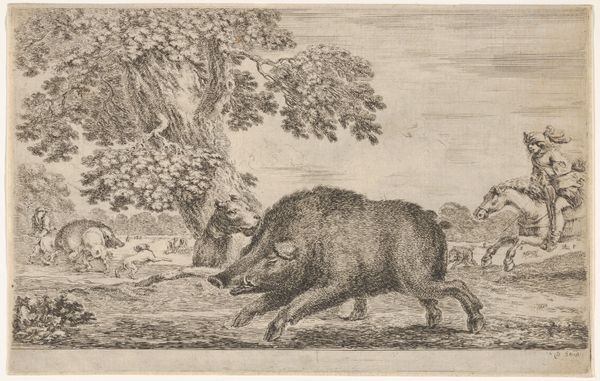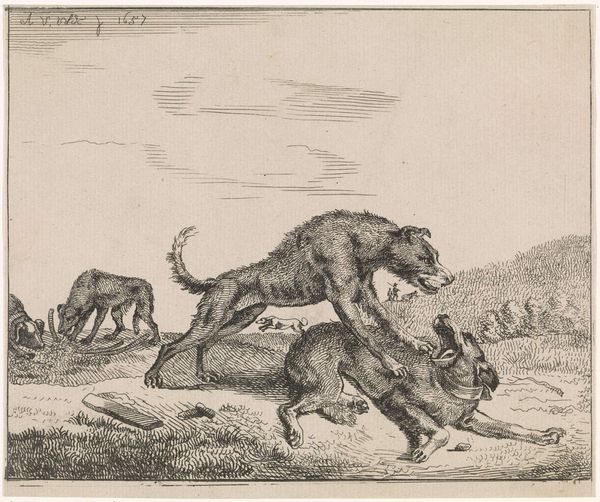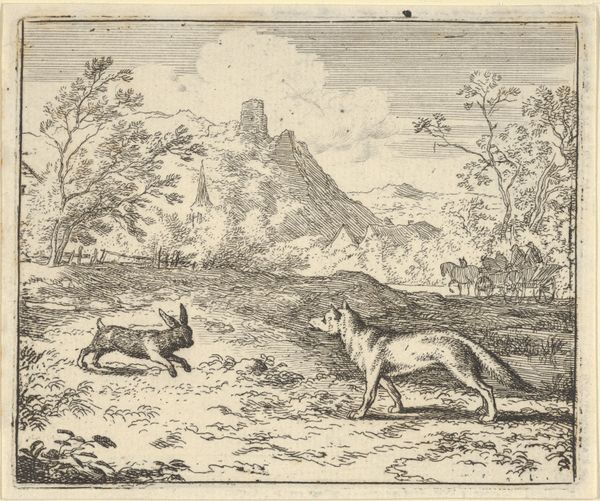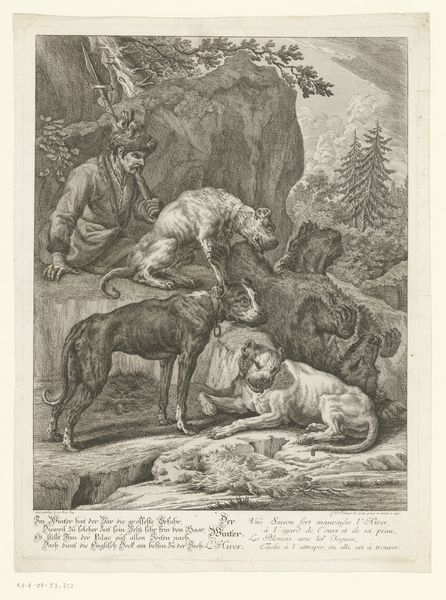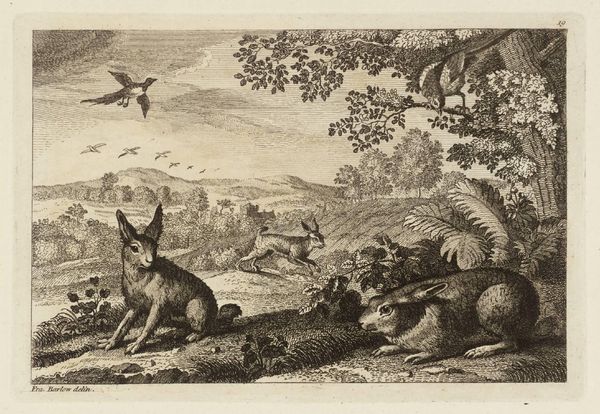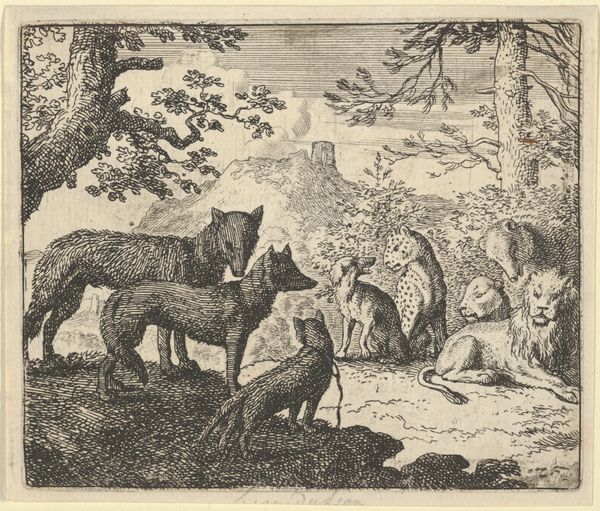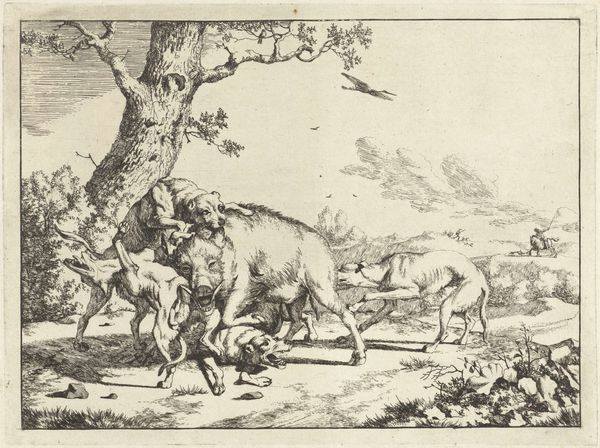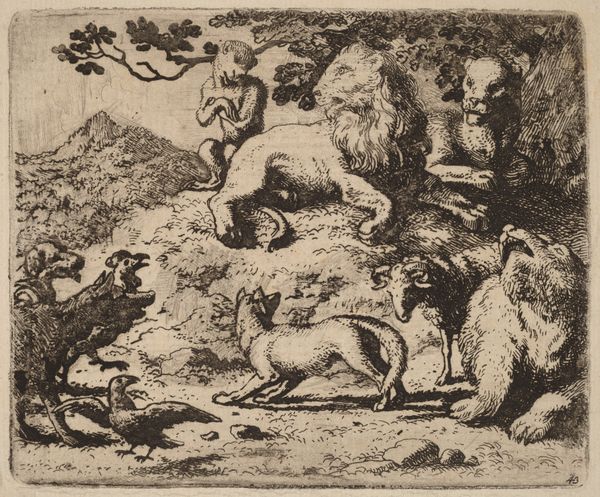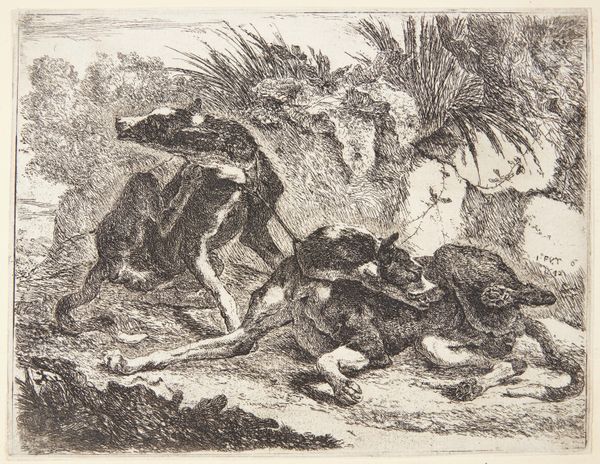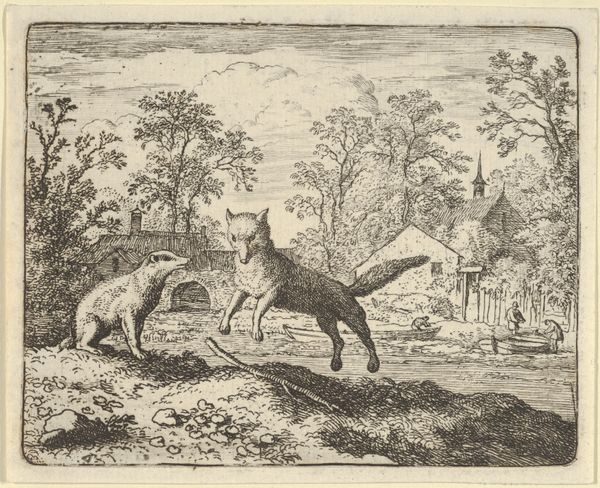
drawing, print, etching
#
drawing
#
baroque
#
pen drawing
#
animal
# print
#
etching
Dimensions: 172 mm (height) x 237 mm (width) (bladmaal)
Editor: So this is "Hund, der leger," or "Dog Playing" created by Joannes Fijt in 1642. It's a pen drawing, etching, and print at the Statens Museum for Kunst. The baroque style and fine lines almost capture the energy of this scene, but with such muted tones, the subject has an isolated feeling. What symbolic layers do you think we can unpack from it? Curator: Isolation is a key aspect here. The dog, typically a symbol of loyalty and companionship, is depicted alone in a wild landscape. What does this suggest about our relationship with the natural world at the time, or perhaps a shifting perspective on domesticity? Do you see how the sharp etching creates a sense of rawness, mirroring the dog's unbridled energy, but also vulnerability? Editor: I hadn't considered that! I focused more on the detail and almost forgot the dog is by itself, despite seemingly "playing". It appears to have contorted into a peculiar position, head angled backward in a scatching motion with an oddly human feel to its reach. Maybe it's seeking an escape? Curator: Precisely! Fijt highlights the dichotomy: domestic animal versus wild setting; freedom versus constraint. Think about the symbolism of dogs throughout art history, shifting from protectors to pets, objects to subjects, which carries heavy psychological, anthropologic, and cultural ties. How does that impact your view? Editor: This tension completely changes my understanding; the Baroque details feel less celebratory and more complex, highlighting a search for place and comfort within an otherwise chaotic world, which still has real relevancy today. Curator: The beauty of iconography! Art serves as a cultural memory. Seeing familiar figures in new contexts opens the door to seeing old ideas differently.
Comments
No comments
Be the first to comment and join the conversation on the ultimate creative platform.
